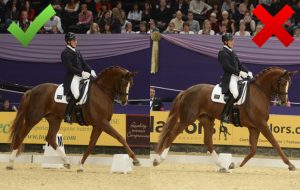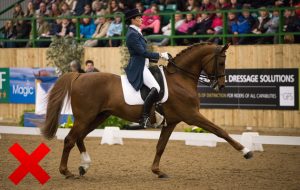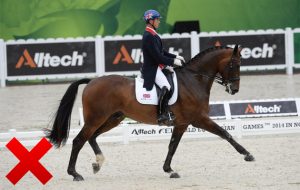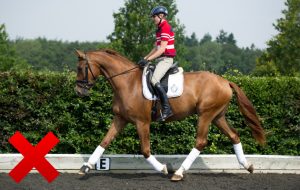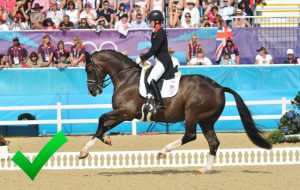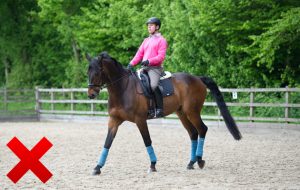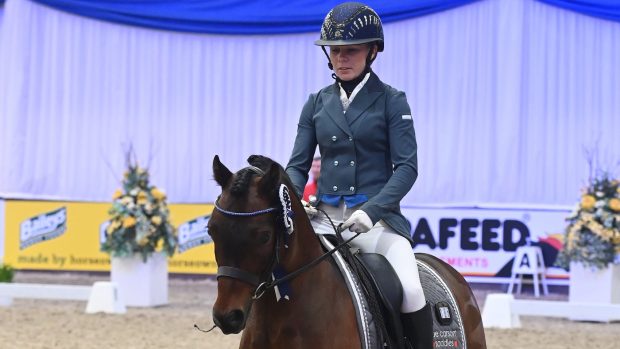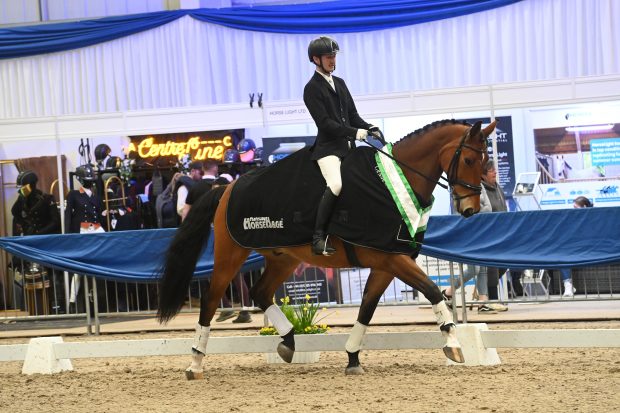We can’t all be Kevin Sparrows of this world, but the following advice should improve the quality of the images you take, as well as those you finally select, to show any horse off to the max on the flat.
Dressage horses should be as uphill as possible, so take photographs on the ‘up’ part of the stride – as the horse is propelling itself into the air – rather than as they are coming back down to earth. The best photographs highlight how well a horse moves: how much lift it gets off the floor and how much it flexes its joints at various points in the stride.
Try and keep the background as uncluttered as possible and choose the smartest side of the arena as your focus. Make sure horse and rider are both clean and tidy.
Using white boots/bandages and saddlepad looks smart and professional. If photographing a horse for sale, consider plaiting it to better accentuate the neck.
Whether the photos are for advertising the horse for sale or just a personal keepsake, here are some key considerations for all three paces.
Trot:
In this pace, the point at which the hindleg is most active and forward will show the horse in its best light. The cannon bones on the pair of legs in the air should be at the same angle, and the hock should show good flexion of the joints.
The front leg and the hindleg in the air should ideally match in a good trot picture. There are some exceptions to this rule, however, as some horses’ trot mechanics make taking this sort of picture of them almost impossible (as per the images of Woodcroft Garuda K and Nip Tuck).
A good trot photograph will also highlight the horse’s knee and shoulder action in front by having this as the leg in the air. If the foreleg in the air is furthest from the camera, the horse can appear ‘tied in’ or limited in the shoulder.
If the horse being photographed is not a big mover, doesn’t have good joint flexion or have much bounce in trot, they are probably best photographed at a slightly different point in the stride, namely just before the diagonal pair touches down. This should have a pleasing M shape as the horse’s legs meet under its body in the picture.
Try to avoid images where only one or three feet are on the ground in trot. It’s not correct and can attract criticism about the purity of the pace.
Canter:
The best point at which to photograph most horses in true canter is when the inside hindleg is at its maximum reach/flexion under the body. With a horse like Valegro, whose hindleg comes so high off the ground, these types of photos accentuate the incredible movement he has through his joints.
With a slightly more average horse, the moment is just before or as the inside hind lands on the ground. Canter is a three-beat gait, and the horse’s forehand should still be at its most elevated at this point. Leave taking the picture too late – after the inside hind has hit the floor – and the front end of the horse will be on its way back towards the floor and the picture will not be so flattering.

This advanced horse’s front foot of the diagonal pair in canter hits the ground just before the hind foot
If the picture is being used to advertise a horse, be mindful that the horse appears to have a three-beat canter in the photograph, rather than four. The only generally accepted exceptions to this are exceptional young horses whose incredible lift of the forehand will mean the gait is four-time, and very advanced horses, whose uphill frame often means the front leg is brought down fractionally earlier to support the raised shoulder – also creating a four-beat gait.
Walk:
This four-beat pace is the hardest to photograph well. The most flattering moment is when one forelimb is suspended and reaching forward, while all four legs can be clearly seen. At other moments in the pace, the horse can look as if he only has three legs. While it’s typically not the most flattering pace to choose, but there are moments – even in a walk-only para test – that can make a pleasing picture.
NB: These images are used for illustration purposes only and no criticism of the horses themselves or their way of going is intended
Don’t miss this week’s dressage special issue of Horse & Hound magazine (23 March 2017), with our exclusive interview with Isabell Werth


